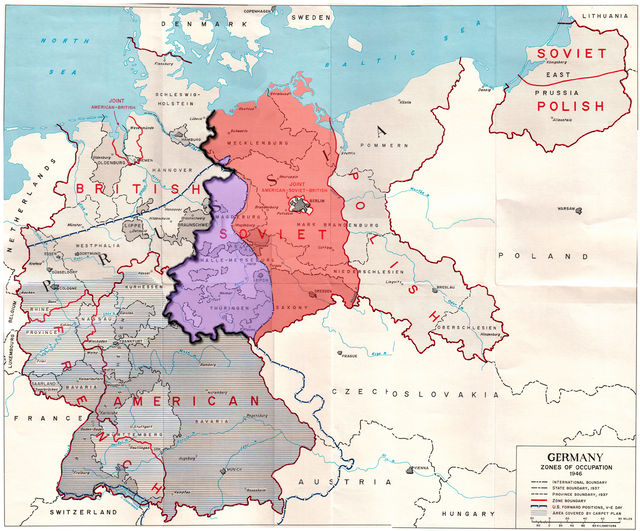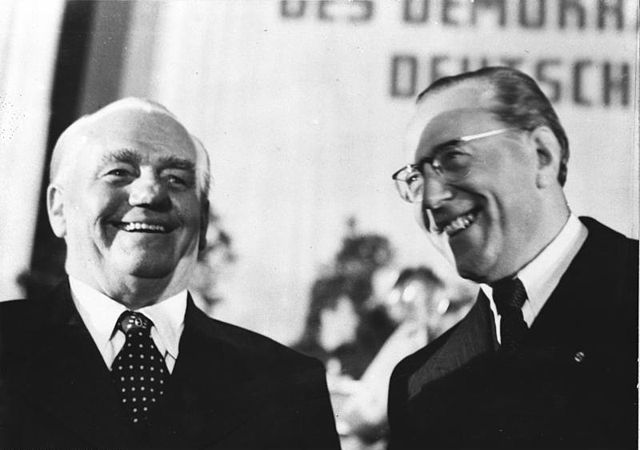The inner German border was the frontier between the German Democratic Republic and the Federal Republic of Germany from 1949 to 1990. De jure not including the similar but physically separate Berlin Wall, the border was 1,381 kilometres (858 mi) long and ran from the Baltic Sea to Czechoslovakia.
Border installations at Schlagsdorf
The Allied zones of occupation in post-war Germany, highlighting the Soviet zone (red), the inner German border (heavy black line) and the zone from which British and American troops withdrew in July 1945 (purple). The provincial boundaries are those of pre-Nazi Weimar Germany, before the present Länder (federal states) were established.
The border before fortification: inter-zonal barrier near Asbach in Thuringia, 1950
Inner German border at Priwall (Baltic Sea coast), July 1961
East Germany, officially known as the German Democratic Republic, was a country in Central Europe from its formation on 7 October 1949 until its reunification with West Germany on 3 October 1990. Until 1989, it was generally viewed as a communist state and described itself as a socialist "workers' and peasants' state". The economy of this country was centrally planned and state-owned. Although the GDR had to pay substantial war reparations to the Soviets, it became the most successful economy in the Eastern Bloc.
GDR leaders: President Wilhelm Pieck and Prime Minister Otto Grotewohl, 1949
SED First Secretary, Walter Ulbricht, 1960
Erich Honecker, head of state (1971–1989)
Chancellor of the Federal Republic of Germany (West Germany) Helmut Schmidt, Chairman of the State Council of the German Democratic Republic (East Germany) Erich Honecker, U.S. president Gerald Ford and Austrian chancellor Bruno Kreisky signing the Helsinki Act








